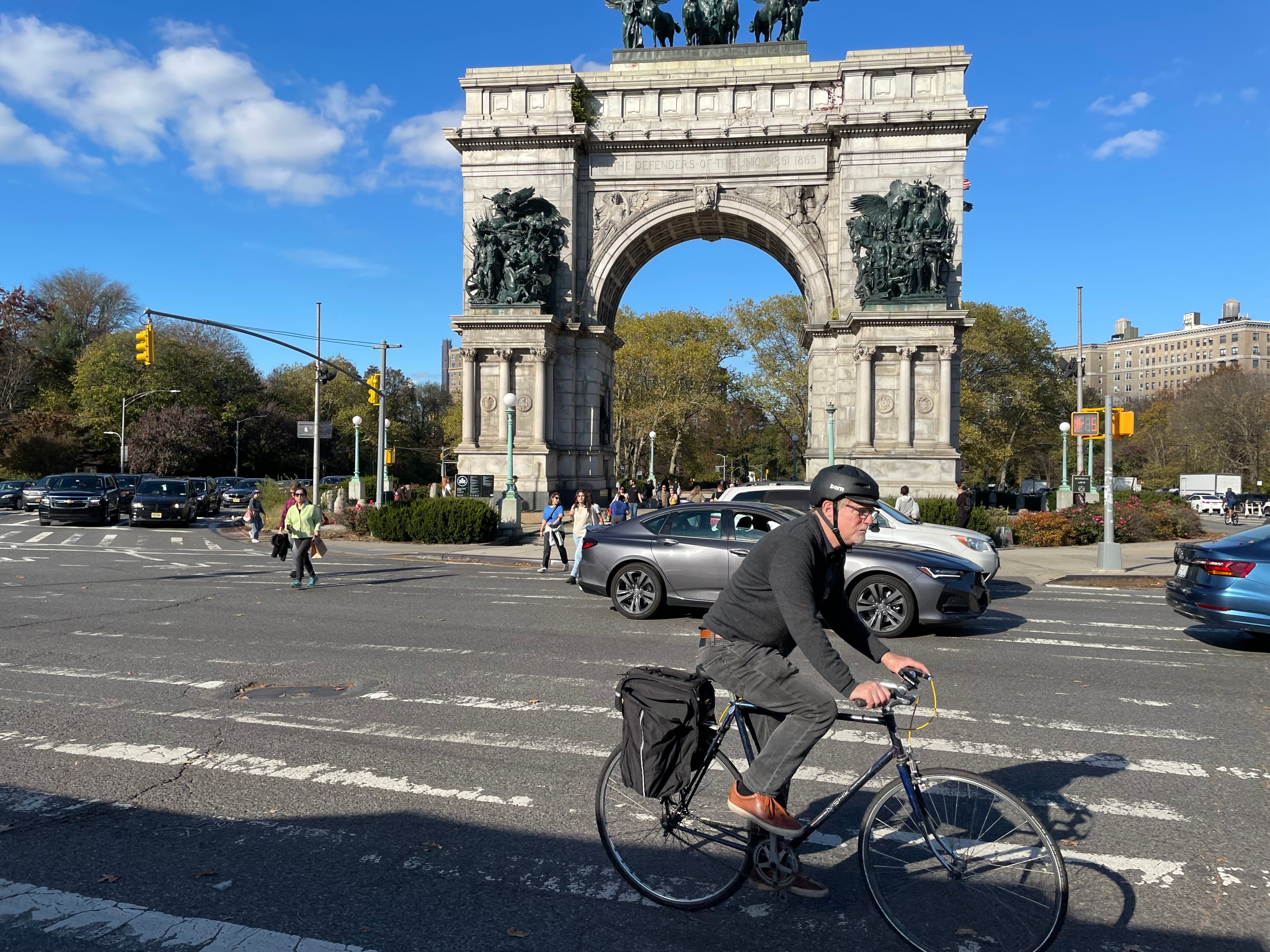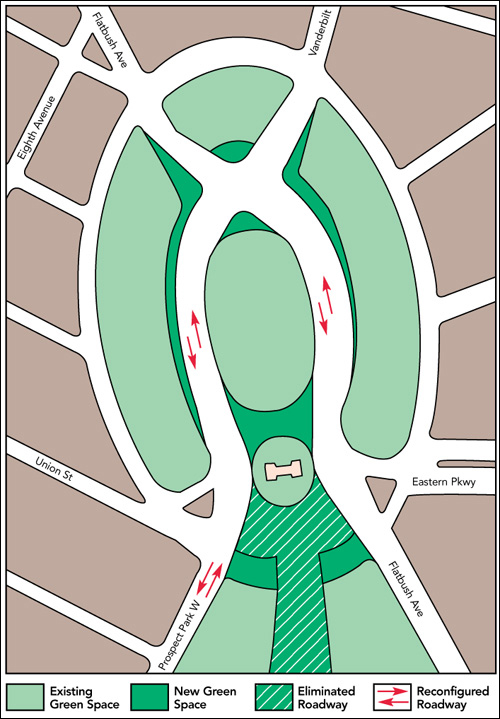
Go big or go home.
Brooklynites want the Department of Transportation to create a great new Grand Army Plaza so that the massive traffic circle, tribute to Union soldiers and desolate gateway to Prospect Park can once again work as a public space.
A whopping 215 comments out of 1,270 in-person respondents at a "listening session" in November asked the DOT to make Grand Army Plaza car-free. Another 445 people — the largest bloc of commenters — suggested less specific large-scale changes to the plaza. [Full findings, PDF]
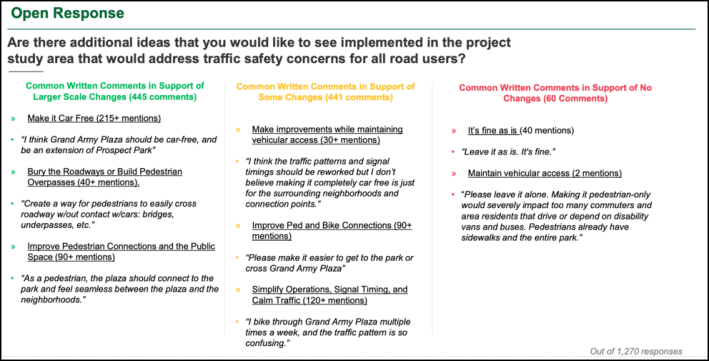
People who showed up for the agency's virtual workshop also asked for big ideas.
"Past changes have made things much better, but more is needed," one commenter said, referring to some bicycle infrastructure and signal-timing changes made in the prior administration.
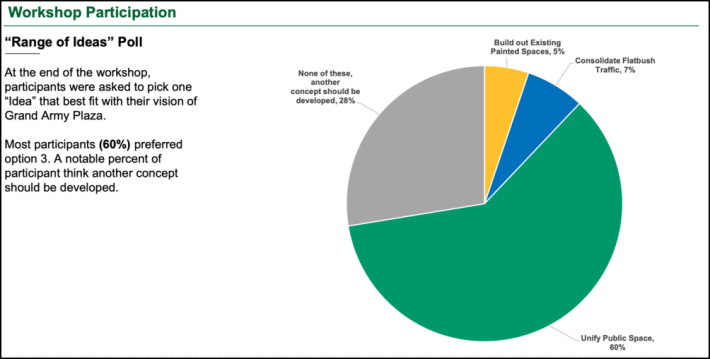
At the virtual outreach session, the DOT noted that the majority of respondents were interested options to "unify the public spaces," out of the three general options on the table. Unifying Grand Army's public spaces would mean the city would attach the pedestrian plaza at the entrance to Prospect Park to the Soldiers and Sailors Memorial Arch, which are currently separated by five lanes of traffic.
Currently, Grand Army Plaza is a chaotic traffic circle inside a larger traffic circle. The outside ring, comprised of Plaza Street East and West, connects to Flatbush Avenue, Eastern Parkway, Vanderbilt Avenue and Prospect Park West. Plaza Street East and Plaza Street West also have a painted bike lane running on the inside track of the street that was never upgraded to a protected bike lane like the city originally pitched for the streets.
The inner ring feeds southbound traffic from Vanderbilt Avenue and Flatbush Avenue from the west side of the road to the east and northbound traffic from Flatbush Avenue along the east side of the ring to either Flatbush Avenue or Vanderbilt Avenue. At the same time, eastbound traffic from Union Street moves along the southern end of the circle, routing drivers to Eastern Parkway, Flatbush Avenue or Plaza Street East.
One result of the chaotic traffic patterns that come from the dual-circle design allowing for thru traffic all over the rings is that mobs of pedestrians are often caught between northbound and southbound traffic on Flatbush Avenue and have to huddle on a sliver of sidewalk between the Brooklyn Public Library and the entrance to Prospect Park.

The plan known currently only as Option 3 would complete the dream that the Grand Army Plaza Coalition came up with in 2007. By unifying the arch and the park entrance, the DOT would also simplify the traffic patterns, so that Vanderbilt Avenue would run on the west side of the inner circle onto Prospect Park West and Flatbush Avenue would run north and south on the east side of the inner circle. A slightly less ambitious plan would still allow thru traffic to pass between the arch and the park entrance, but would also shift all Flatbush Avenue traffic to the east side of the inner traffic circle.
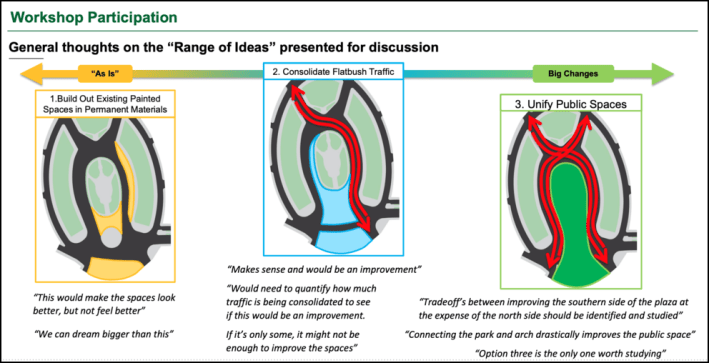
The DOT has been working to make the plaza safer and more welcoming for pedestrians and cyclists since the Bloomberg administration, but the agency admitted that the work it's done has hit the ceiling of what can be done with just paint and plastic.
"I’ve been working on Grand Army Plaza for 15 years," Terra Ishee, the director of the DOT Pedestrian Unit, told Streetsblog in November. "We’ve done all that we feel like we can do with the resources we have in-house, so we really need to bump it up and make it a full blown capital project."
The in-person outreach effort also found that many respondents, of which almost 75 percent lived within 1.5 miles of Grand Army Plaza, also wanted to see the DOT do big things at the plaza.
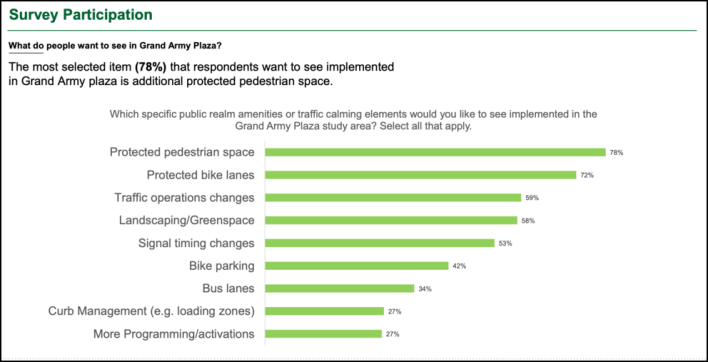
Survey respondents said that their top three desires for the new Grand Army were adding more protected pedestrian space, protected bike lanes and changing the traffic operations through the circle.
The survey results are still an early piece of the process to fix Grand Army Plaza. The DOT has been upfront that the entire journey towards a planned capital project will be a long one, with an initial design for a capital project slated to be revealed in fall 2023.
In addition to the planned work on the plaza itself, the DOT is also going to do a traffic study on the area, and is working on trying to unify the work on Grand Army with the work the agency plans to do in 2023 on the Underhill Avenue and Vanderbilt Avenue open streets.
Advocates see the initial survey results as something to celebrate.
"Grand Army Plaza is one of New York City's most iconic and busiest public spaces, and residents have spoken clearly: After decades of car-centric planning, it's time to return Grand Army Plaza to people," said Kathy Park-Price, the Brooklyn organizer at Transportation Alternatives. "With bold action, Grand Army Plaza can truly become an extension of Prospect Park and a public space worthy of Brooklyn."
